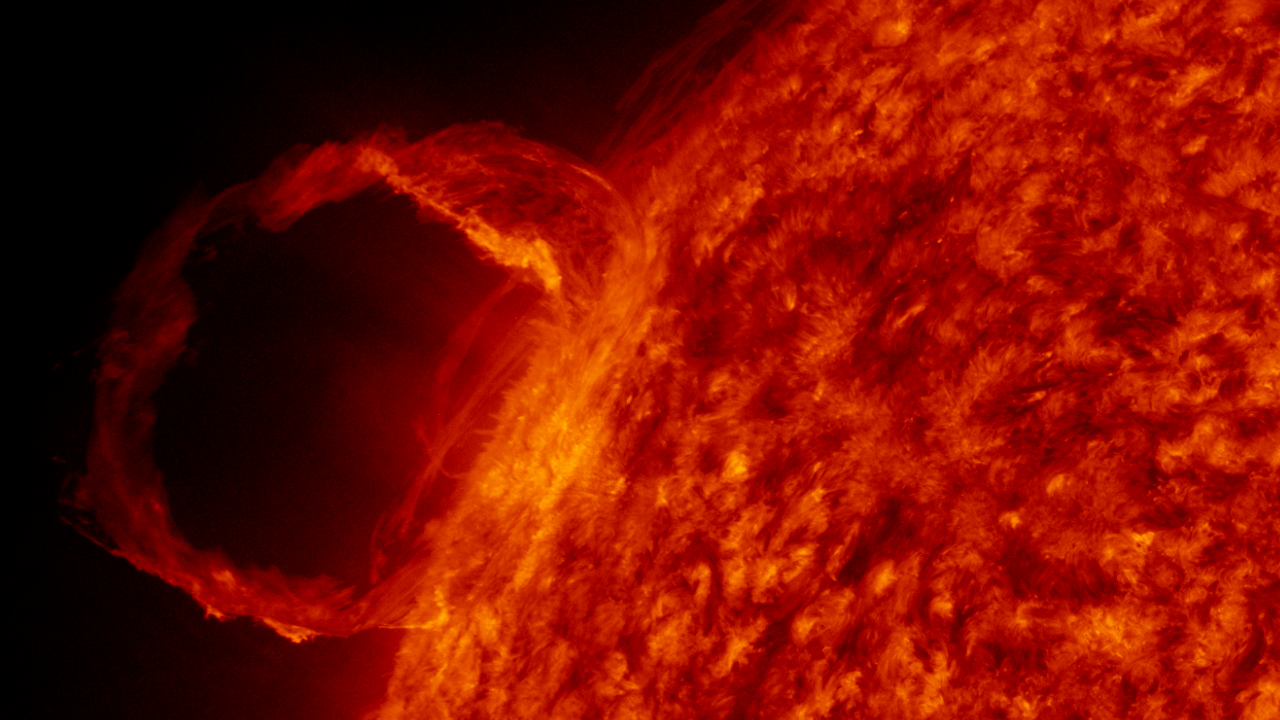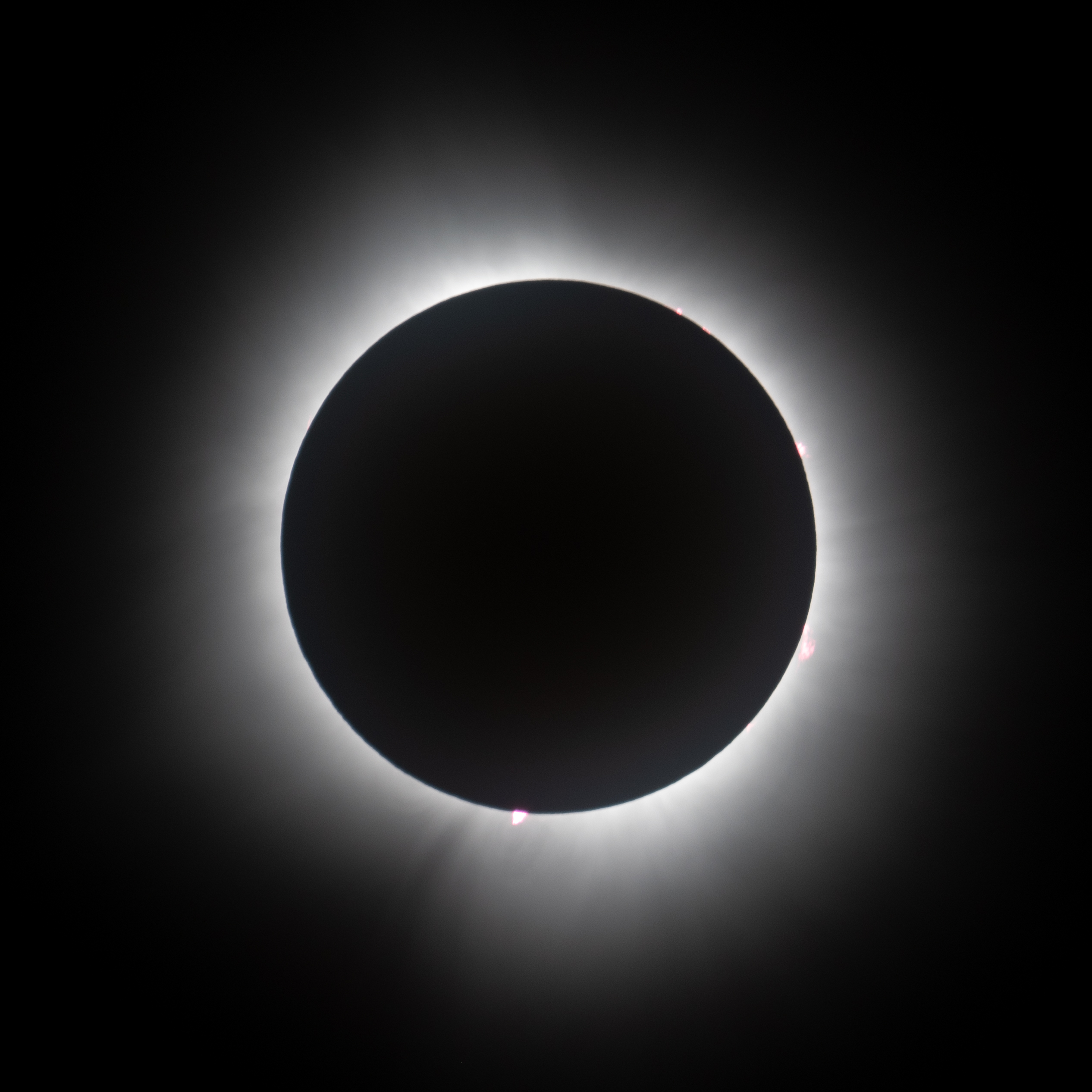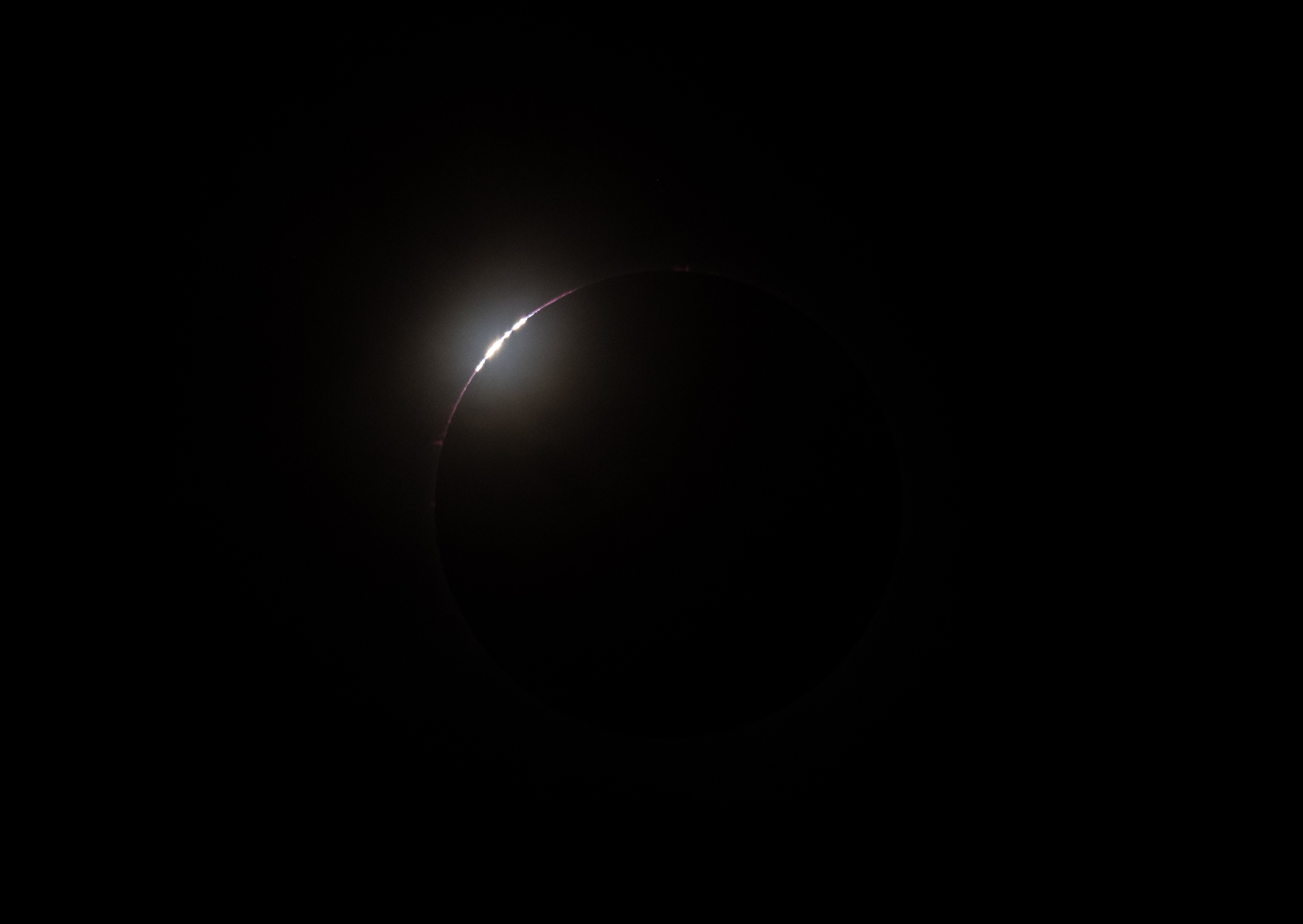Well, the world didn’t end (yay), so let’s talk about Monday’s total solar eclipse and those strange pink spots around its periphery. If you were lucky enough to snap a pic of the eclipse yourself, or have seen some of the incredible photos taken by others, you may have noticed bright pink, red, and orange coming off of the Sun like streamers. These are called solar prominences – but what are they?
What is a solar prominence?
According to NASA, a solar prominence “is a large, bright feature extending outward from the Sun’s surface”. Formed of plasma, prominences are anchored in the Sun’s photosphere and extend into its outer atmosphere, or corona.
Prominences can vary in size and shape. Usually, they are longer than the diameter of the Earth – some have even extended for millions of kilometers – and most often one end is tethered to the Sun, creating a streamer effect. But sometimes, they occur as an arch, with both ends anchored to sunspot regions.

A solar prominence in 2010.
The glowing appendages form as plasma “flows along a tangled and twisted structure of magnetic fields generated by the sun’s internal dynamo”, explains NASA. When it becomes unstable, it erupts outward and creates the spots we see in the pictures.
Also known as filaments, prominences form over the course of about a day and can last for several months.
Their rosy color comes from electrically charged hydrogen and helium in the plasma. Prominences emit light in the red part of the spectrum as hydrogen fluoresces during the hydrogen alpha transition. However, when combined with white light from ordinary thermal emissions, it can produce a pink effect, as seen here:

Pink solar prominences could be seen around Monday’s eclipse.
Why was this visible during the eclipse?
Monday’s eclipse happened very close to solar maximum – when the Sun is at its most active and the chances of flares and coronal mass ejections (CMEs) are highest.
Solar maximum is a product of the 22-year cycle of the Sun’s magnetic field, during which two peaks occur around 11 years apart. When the cycle reaches its peak, as it is now, the magnetic field becomes tangled, which means we’ve been treated to all sorts of phenomena of late, including sunspots, flares, and the CMEs that cause auroras.
Even when solar activity is at a minimum, prominences can be seen around the edge of the Sun – but during solar maximum, they’re even more abundant, which is why they’ve popped up in so many eclipse photos.
Solar prominences weren’t the only phenomena we witnessed on Monday. We also saw the rare light effect known as Baily’s beads, which occurs when light from the Sun can be glimpsed at the Moon’s jagged edges, looking a little like beads.

Baily’s beads seen just before totality on April 8.
Unfortunately, those in the US will have to wait until 2044 for the next total solar eclipse, but as the Sun heads toward its peak of activity, expect to see plenty more spectacles from our star in the coming months.
All “explainer” articles are confirmed by fact checkers to be correct at time of publishing. Text, images, and links may be edited, removed, or added to at a later date to keep information current.
Source Link: The Total Solar Eclipse Was Surrounded By Bright Pink Streamers – What Were They?